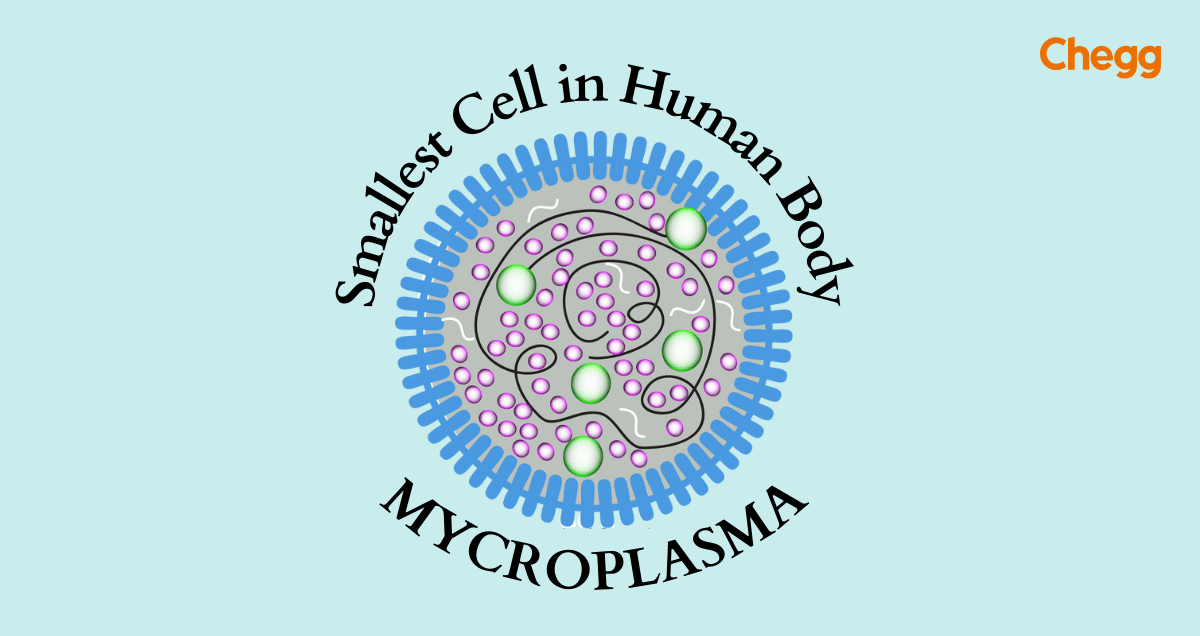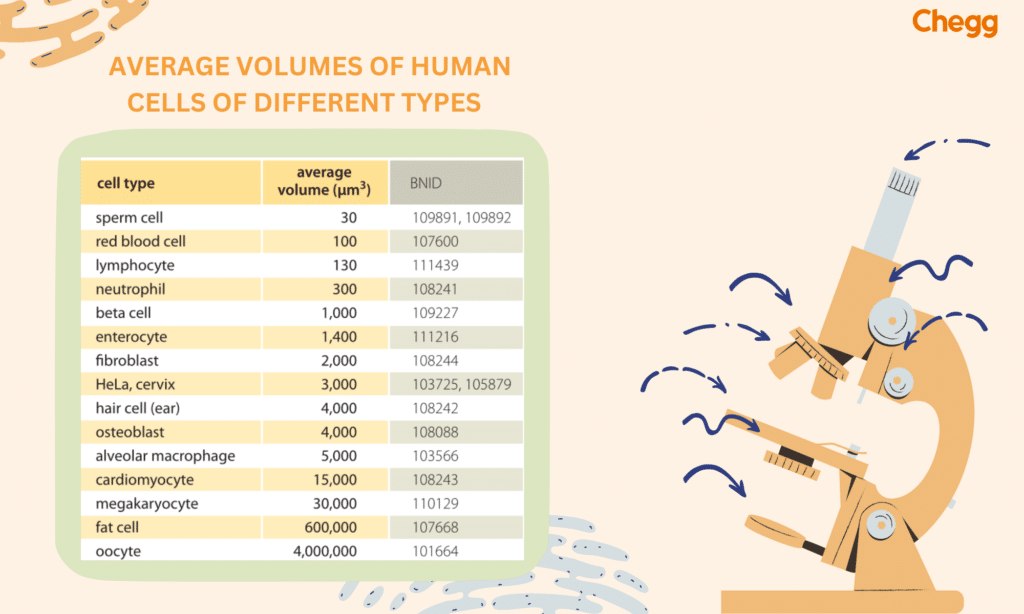
Quick Summary
Table of Contents
The smallest cell in human body is the sperm cell, yet it plays a vital role in reproduction. In most species, reproduction relies on two types of cells: egg cells and sperm cells, which differ significantly. The egg cell is large, providing nourishment and protection for the embryo, while the sperm cell is small, motile, and built for speed to fertilize the egg. During fertilization, millions of sperm compete, but only one succeeds. Despite its tiny 5-micrometer size, the sperm carries half the genetic material needed to create life. This makes it an essential part of the reproductive process, ensuring genetic continuity and diversity in humans.
In 1665, Robert Hooke peered through a microscope at a sliver of cork. He observed tiny, box-like structures and named them “cells.” However, his limited magnification didn’t reveal their complexity.
Later, Anton van Leeuwenhoek, using a more powerful microscope, witnessed these “cells” moving. This movement led him to believe they were alive, coining the term “animalcules” for these microscopic organisms. Nearly two centuries later, botanist Robert Brown made another key discovery. He identified the nucleus, a crucial component within plant cells. These advancements, along with further research, laid the foundation for the development of cell theory, the cornerstone of life.
Your body’s ability to move is powered by a trio of muscle cell types:
A sperm cell consists of three main parts:
The granule cells of the cerebellum are the smallest in the human body in terms of length. Despite their tiny size, these cells play a huge role in brain function. They are not only the most abundant neurons, making up about 75% of the brain’s total neuronal population, but they also help in coordinating movement and other essential functions.
Here’s why these miniature neurons are so important:
Though small in size, cerebellum’s granule cells are giants in importance, shaping both our physical actions and mental processes.

Amidst the range of cells that fill the human body, the smallest cell in the human body is the sperm cell. This small cell, measuring only 50 micrometers in length, has efficient functions facilitated by its size.
The sperm cell is the smallest in the human body, yet it plays a huge role in human reproduction. Despite its tiny size, it carries the genetic material necessary for creating new life and has specialized features that enable it to reach and fertilize the egg.
Here’s what makes the sperm cell unique and vital:
Though tiny in size, the sperm cell is a key player in reproduction, ensuring the continuation of human life through its speed, structure, and genetic role.

The sperm cell, the smallest cell in the human body, is indeed remarkable. Measuring approximately 50 micrometers in length, it is barely visible to the naked eye, showcasing a specialized design that allows it to fulfill its critical function in reproduction.
Under a microscope, the sperm cell reveals its intricate structure. It consists of a head and a tail. The head contains the nucleus, which holds the genetic material essential for fertilization. The tail, or flagellum, is a long, whip-like extension that propels the sperm cell with impressive speed through the female reproductive system.

It is important to note that males and females contribute differently to human reproduction. The smallest cell of human body is the sperm cell, which is found in males. The largest cell in the female body is the egg cell or ovum. This shows the complex process of human reproduction, where each sex plays a unique role.
Both the sperm cell and the egg cell play essential roles in human reproduction, yet they differ significantly in size, function, and structure. The sperm cell is extremely tiny and designed for movement, carrying the father’s genetic material necessary for fertilization. In contrast, the egg cell (ovum) is much larger and contains the mother’s genetic information, along with essential nutrients to support early embryo development.
A major difference between the two cells is their chromosomal composition. The sperm cell carries either an X or Y chromosome, determining the sex of the baby upon fertilization. The egg cell, however, only contains an X chromosome. The ovum is the largest cell in the human body, measuring approximately 0.1 millimeters in diameter, about the width of a human hair. Despite its size, this single cell is released from the ovary each month and has the potential to form a new life.
The production of sperm, called spermatogenesis, is a complex process that occurs within the testes. It takes about 64 days to complete and involves several stages, as outlined below:
| Process of Spermatogenesis | Description |
|---|---|
| Location | Happens in the seminiferous tubules of the testes. |
| Duration | Takes about 64 days for sperm to mature. |
| Mitotic Division | Spermatogonia (germ cells) divide to form primary spermatocytes. |
| Meiosis | Primary spermatocytes undergo meiosis I and II, forming spermatids (immature sperm cells). |
| Spermiogenesis | Spermatids transform into mature spermatozoa, developing a head, midpiece, and tail. |
| Spermiation | Mature sperm are released into the seminiferous tubules and move to the epididymis for final maturation and storage. |
This entire process ensures that millions of healthy sperm are produced daily, ready to fertilize an egg and continue the cycle of life.
Sperm cells are an excellent example of how form follows function in biology. Their specialized traits ensure the propagation of genetic material across generations, which is fundamental to the survival and evolution of species.
The sperm cell is the smallest in the human body, yet it plays a crucial role in human reproduction. Despite its tiny size, it carries the genetic material necessary to create new life. This microscopic cell is a true marvel, highlighting how even the smallest biological structures can have an enormous impact. The sperm cell is produced in the male testes and is released in millions at a time. Its primary function is to locate and fertilize the egg cell within the female reproductive tract. This journey is highly challenging, requiring the sperm to travel through a complex environment to reach the egg.
Once a sperm successfully meets the egg, fertilization occurs, leading to the formation of a zygote—the very first cell of a new human life. At this stage, the genetic material from both the sperm and the egg combine, creating a unique set of chromosomes that determine the baby’s traits and characteristics. Beyond just fertilization, the sperm’s journey also plays a natural selection role. The process helps eliminate weaker or defective sperm, ensuring that only the strongest and healthiest sperm successfully fertilizes the egg. This built-in biological selection helps improve the fitness and vitality of the developing embryo.
Even though the sperm cell is the smallest, its role in the creation of life is immense, making it one of the most important cells in human biology.
The sperm cell is uniquely designed for its primary function—delivering DNA to the egg. It is a streamlined and highly motile cell built for efficiency. Unlike other cells, sperm lack unnecessary organelles like ribosomes, endoplasmic reticulum, and Golgi apparatus, making them lightweight and specialized for their task.
These features make the sperm cell a highly adapted reproductive cell, ensuring successful fertilization and the continuation of life.
As we explore the microscopic term, the smallest cell in the world of the human body is the sperm cell, we uncover the profound significance of the smallest cell in the human body—the sperm cell. This tiny cell embodies the essence of life’s continuity and plays a vital role in the intricate process of reproduction. Despite its diminutive size, it undertakes a remarkable journey from the male reproductive system to fertilize the egg, representing the core of genetic inheritance.
The marvel of the smallest cell in the human body extends beyond its physical attributes. Its journey symbolizes the seamless connection between generations, bridging the gap between ancestors and descendants. In the grand tapestry of life, the sperm cell stands as a testament to the enduring cycle of existence and the profound impact of even the smallest components in the continuation of life.
Also Read:
Sperm cells are the tiniest cells in the human body.
The cerebellum’s granule cell is the smallest in the human body. Its length ranges between 4 and 4.5 micrometers.
The Cerebellum granule cell, roughly 4 micrometers to 4.5 micrometers, is slightly smaller than RBCs, or Red Blood Cells.
Ejaculated sperm can survive in the female reproductive system for several days. Fertilization is achievable if the sperm stays for at least five days.
Whether a woman is menstruating or not, sperm may survive in her reproductive system for up to 5 days.
Sperm cells are the smallest because they are streamlined for efficiency. Their size (approximately 4 µm in diameter) is optimized to carry genetic material and move swiftly toward the egg.
The sperm cell’s primary function is to deliver the male’s genetic material (23 chromosomes) to the female egg during fertilization, resulting in the formation of a zygote.
Under optimal conditions, sperm can survive for up to 5 days in the female reproductive system, making fertilization possible even after intercourse has occurred a few days earlier.
The smallest living cell is the Mycoplasma bacterium, measuring about 0.2 micrometers in diameter.

Authored by, Amay Mathur | Senior Editor




Amay Mathur is a business news reporter at Chegg.com. He previously worked for PCMag, Business Insider, The Messenger, and ZDNET as a reporter and copyeditor. His areas of coverage encompass tech, business, strategy, finance, and even space. He is a Columbia University graduate.
Editor's Recommendations
Chegg India does not ask for money to offer any opportunity with the company. We request you to be vigilant before sharing your personal and financial information with any third party. Beware of fraudulent activities claiming affiliation with our company and promising monetary rewards or benefits. Chegg India shall not be responsible for any losses resulting from such activities.
Chegg India does not ask for money to offer any opportunity with the company. We request you to be vigilant before sharing your personal and financial information with any third party. Beware of fraudulent activities claiming affiliation with our company and promising monetary rewards or benefits. Chegg India shall not be responsible for any losses resulting from such activities.